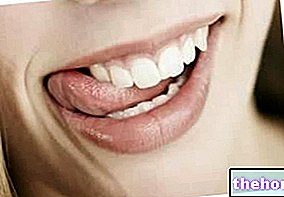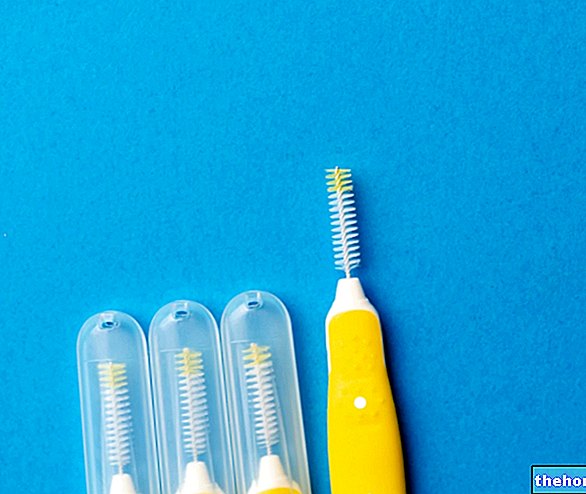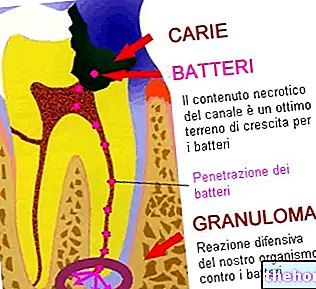What is the dental pulp?
Although the teeth are particularly hard and resistant, under the outermost layers (enamel and dentin) we find a rather soft tissue, called pulp, essential for maintaining the vitality of each dental element.

The dental pulp is a soft, non-calcified tissue, essential to ensure the "adequate supply of blood, oxygen and nutrients to the tooth. It is enclosed in the pulp chamber, cavity inside the crown (see image on the side), and in the root canals. , located in or in the root of the tooth. There are therefore two sections of the dental pulp:
- Chamber pulp: portion of pulp contained within the dental crown
- Root pulp: part of the pulp that extends along the root canal. The nerve and vascular bundles contained within it access it through the radicular foramen.
Glossary
Dental crown: dental section that protrudes from the alveolus
Alveolus: bone cavity in which the roots of the teeth are housed
Root canal: canaliculus inside the root, in which nerve fibers and blood vessels flow
Root foramen: The point from which nerves and blood vessels access the tooth
Functions
A tooth could not live without its dental pulp, this being an indispensable tissue for every dental element. Let's see, below, what are the main functions of the pulp:
- Dentin production (dentinogenesis): the odontoblasts located on the pulpo-dentinal junction are the cells used for this function.
- Nutritional (trophic) function: the dental pulp nourishes the avascular dentin allowing the diffusion of the nutrients coming from the rich blood supply
- Protective function exercised by dentin, in turn formed by odontoblasts
- Sensory function: being highly receptive to sudden changes in temperature, trauma and pressure variations, the dental pulp confers sensitivity to the tooth through the nerve bundles enclosed within it; some of these penetrate with unmyelinated fibers up to the dentin along the radical channels and account for the marked pain sensitivity of this area (see sensitive teeth)
- The pulp ensures an adequate vascular supply to the dental element through venules and arterioles
Cells
The dental pulp is made up of mucous connective tissue (a type of loose connective tissue) made up of 25% organic material and 75% water; dentin is instead composed of 20% organic material and 80% hydroxyapatite (inorganic); the latter reaches 95% in the enamel, the very hard and translucent tissue that covers and protects the tooth.
The dental pulp is rich in nerve fibers, blood vessels and cells that synthesize dentin. More precisely, the dental pulp can be divided into three layers, each of which is distinguished by a particular cellular composition; from the center to the periphery we find:
- "Rinaggio" zone (innermost), containing fibroblasts and undifferentiated mesenchymal cells. Fibroblasts act as a support for all other components of the dental pulp; they synthesize collagen and fundamental substance, and ensure the transport of nutrients from the cells to the blood and vice versa.
- "Weil" zone, consisting of a network of nerve fibers (Rashkoff's nerve plexus) and capillaries. The nerve bundles enter the dental pulp starting from the apical foramen; as anticipated, unmyelinated nerve fibers branch off from Rashkoff's nerve plexus through the odontoblast layer up to the dentin canaliculi
- Outermost area containing odontoblasts. The odontoblastic layer is made up of highly differentiated cells responsible for the production and secretion of dentinal components. These specific cells take on a very particular arrangement: while in the coronal section they are arranged in a palisade, in the radical portion the odontoblasts are arranged in rows of cubic cells that gradually flatten as they approach the root apex.
Related diseases
We have seen that the dental pulp confers sensitivity to the tooth thanks to the fibers that innervate it.
That said, it is understandable how toothache and dentinal hypersensitivity are the two main disorders triggered by a generic inflammation of the pulp tissues.
A severe trauma, a severe dental chipping or a generic tooth infection can seriously compromise the functions and structure of the dental element, causing very intense pain and leading to necrosis or gangrene of the dental pulp. An insult of external origin to the dental pulp - be this an "infection or a trauma - it can give rise to a series of disorders that irreversibly damage the tooth.
The most common diseases related to dental pulp infection include:
- Pulpitis: generic inflammation of the pulp tissues, typical consequence of a caries not adequately treated. Pulpitis cannot be treated by simple dental filling: in such situations, devitalization is the treatment of choice. Only in extremely severe cases, tooth extraction is required.
- Tooth abscess: A buildup of bacteria, white blood cells, plasma, and cellular debris (pus) in the tissues surrounding a tooth. When the abscess involves the dental pulp, the patient perceives an excruciating toothache that is difficult to relieve with classic analgesic drugs. If diagnosed early, before the infection pushes into the pulp or alveolus, the abscess can be treated with antibiotic treatment and / or with the drainage of purulent material accumulated inside.
- Radicular type dental cyst: typical complication of dental pulp necrosis, in turn induced by trauma, deep caries or pulpits. Apicoectomy is the first choice treatment to cure dental cyst.
- Dental granuloma: chronic inflammation, generally asymptomatic, of the root apex and adjacent tissues. When not treated in time by devitalization or apicoectomy, dental granuloma can encroach on the dental pulp, causing pulpits and necrosis of the dental pulp.























-nelle-carni-di-maiale.jpg)




